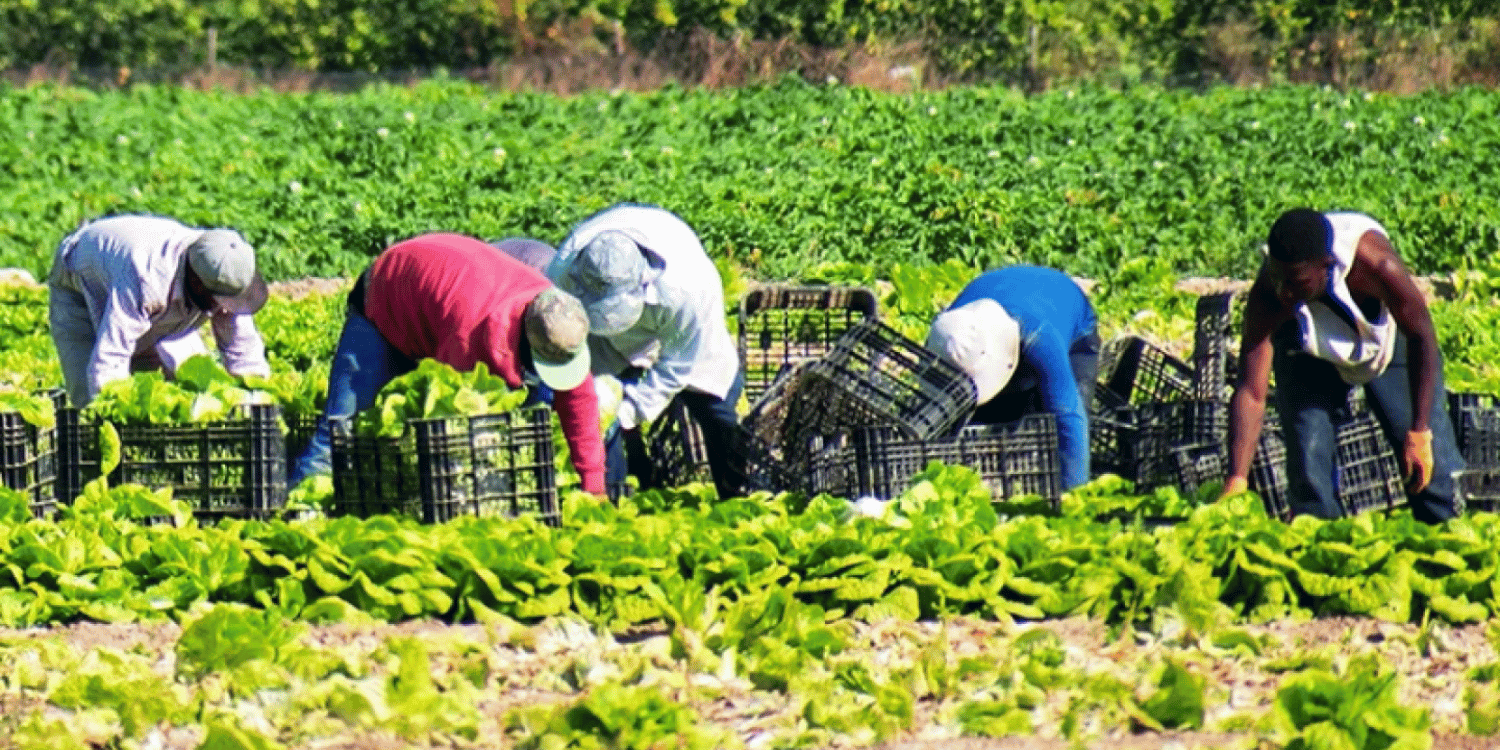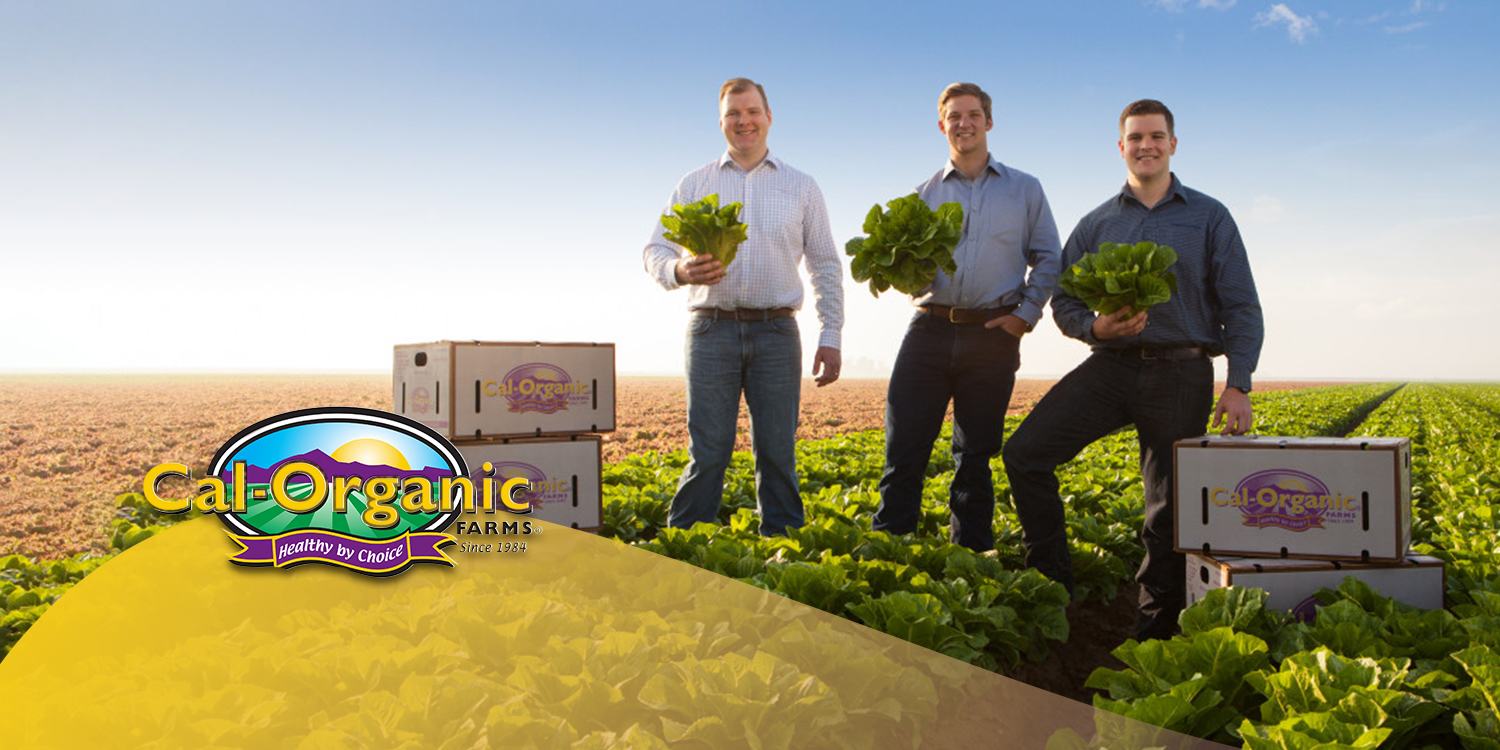Starting a business in agriculture requires strategic planning and careful execution.
A crucial part of this process is the development of a comprehensive business plan.
Especially in the niche sector of banana farming, a well-structured plan holds the key to your enterprise’s success.
In this context, it is important to understand the unique considerations to bear in mind while planning for this type of business.
The purpose of this discussion is to present a sequenced approach to designing your business blueprint.
In providing this knowledge, we hope to equip potential banana farmers with the tools necessary to navigate this complex process and achieve success.
- Understand your target market for banana sales.
- Determining potential location and size of the farm.
- Developing optimal cultivation techniques and schedules.
- Analyze current competition in the banana market.
- Preparing a strong, strategic marketing plan.
Moving forward in this article, we will be exploring additional crucial topics that are imperative for initiating a successful banana farming business.
Getting deeper, you will learn about important financial projections, staffing requirements, and potential challenges you might face, along with solutions to tackle them.
As we navigate through these sections, you’ll gain insights that not only compliment your initial business plan, but enrich it in a way that allows for a more smooth-running, profitable banana farming operation.
This information aims to equip you with all the necessary tools, that aligns with your plan, helping you to ultimately manifest your vision into reality.
Contents
- Essential Steps In Crafting A Banana Farming Business Plan
- 1. Identify target market for banana sales
- 2. Determine Potential Farm Location and Size
- 3. Develop Cultivation Techniques and Schedules
- 4. Analyse Current Market Competition
- 5. Prepare Strategic Marketing Plan
- 6. Estimate production and operating costs
- 7. Forecast Potential Sale Profits
- 8. Outline risk management strategies
- 9. Create a Hiring/Staffing Plan
- 10. Draft Financial Projections and Funding Needs
- The Bottom Line
Essential Steps In Crafting A Banana Farming Business Plan
1. Identify target market for banana sales
In Short: Identifying the target market for banana sales is crucial for the success of a banana farming business, with insights on customer preferences, needs, and habits shaping cultivation, marketing, and overall business strategy. Enumerating potential consumer segments, narrowing down the market, understanding the market size and growth potential, and customer engagement can help formulate specific marketing strategies tailored to each buyer persona.
The identification of the target market for banana sales is a crucial first step in establishing a successful banana farming business. This step lays the groundwork and shapes the following decisions related to all other aspects of your business plan.
It is essential to have a clear understanding of who will potentially buy your bananas. Knowing your prospective customers’ preferences, needs, and buying habits helps you shape your cultivation, marketing, and overall business strategy effectively.
Differentiating your target market includes looking into demographic, geographic, and psychographic attributes. Demographically, it could be age, gender, income level, and occupation among many others. Geographically, it can vary by location, from rural to urban areas, or even different countries. Psychographically, it involves lifestyle, social class, and personality traits.
A thorough market research will equip you with the necessary insights to help identify your potential customers more accurately.
You can start this process by determining who the main consumers of bananas are in your area or even the international market, depending on the scale of your proposed banana farming business.
Keep in mind, bananas are a versatile crop, they can cater to a wide range of consumers. For instance, individuals looking for a healthy snack, bakeries in need of banana bread ingredients, wholesalers who distribute in local markets, or sportsmen requiring energy-rich fruits can all be part of your target market.
Identifying your target market becomes simpler when you list down all probable consumer segments. Below are a few examples:
- Local fruit vendors
- Supermarket chains
- Exporters and importers of fruits
- Smoothie and juice bars
- Bakeries and cafes
- Schools and hospitals (since they serve fruits in their meal plans)
- Gyms and fitness centers as part of dietary recommendations
After noting down the potential customer groups, it becomes crucial to drill down to the specifics and narrow down your target market. This involves conducting specific research on the needs, preferences, and purchase behavior of the identified groups.
Also, one should consider the market size and growth potential of the selected segments. For instance, a segment that exhibits steady growth over time could offer a more stable market opportunity.
Customer engagement through surveys and interviews can be a helpful tool in collecting much-needed market insights. You can conduct them online, over the phone, or even face-to-face.
The input obtained can be used to create customer profiles, also known as buyer personas, which reflect detailed characteristics of your ideal customers. This helps in visualizing and better understanding your prospective buyers.
Once your target market is clearly defined, it helps to custom-tailor your marketing strategies to reach and engage these specific customers effectively. This step will also significantly influence the decisions related to the location, size of the farm, cultivation techniques, and even the specific variety of bananas you decide to cultivate.
In essence, the process of identifying your target market doesn’t end with simply knowing who they are. It extends to understanding your prospective customers’ needs and wants, which is critical in establishing a sustainable banana farming business.
2. Determine Potential Farm Location and Size
In Short: When planning a banana farm, the choice of location and size are crucial. Factors such as tropical climate, fertile soil, ease of access, water availability, financial capacity, and proximity to market must be carefully considered.
Determining the potential farm location and size is the next critical step in crafting a compelling banana farming business plan.
It’s worth noting that the location for your banana farm should ideally have a tropical or subtropical climate.
Banana plants thrive in warm conditions and are sensitive to frost and cold temperatures.
Furthermore, the preservation of soil fertility is also a key point to pay attention to, as fertile well-drained soil is essential for optimal crop growth.
This requirement implies that the terrain should be flat or gently sloping to prevent waterlogging, which can lead to root damage and disease development.
Below is a brief discussion of factors to take into consideration when determining the potential farm location and size:
- Accessibility: Your chosen location should ideally be easily accessible for transportation and logistics purposes.
- Water availability: Bananas require a lot of water for their growth, so a reliable water source is critical.
- Climate and soil type: As mentioned earlier, bananas flourish in tropical climates with fertile, well-drained soil.
- Size consideration: The size of your banana farm should ideally align with your production goals and financial capacity.
Having said that, a comprehensive evaluation of your financial capacity is also important when deciding on farm size.
This is because the larger the size, the higher the operating expenses such as the initial purchase or rental costs, setup costs as well as ongoing maintenance and labour costs.
It’s also worthwhile to bear in mind that expansion can be undertaken gradually as your banana farming business begins to yield profits.
Going large-scale from the start can be risky without having conducted a test run or without having any prior experience in farming bananas.
On the other hand, if you have a thoroughly researched business plan and sufficient funding, starting on a larger scale can prove to be more profitable in the long run.
You should also consider the proximity to the market and understand local demand for bananas.
Being closer to the marketplace not only reduces transportation costs but also ensures that the bananas reach consumers at their freshest.
In summary, the location and size choice for your banana farm is driven by various factors including climate, soil conditions, water availability, accessibility, financial capacity and also, market proximity.
3. Develop Cultivation Techniques and Schedules
In Short: Creating a banana farming business plan involves developing effective cultivation techniques and schedules, taking into account elements such as banana species selection, irrigation, planting season, growth timeline, pest control strategies and soil management. Planning the cultivation schedule accurately, together with employing advanced techniques such as vertical farming or hydroponics and adhering to local agriculture laws, forms the cornerstone of an efficient and lucrative banana farming operation.
In the creation of a banana farming business plan, the art of examining and adopting ideal cultivation techniques is a pivotal step.
Developing a system that enhances banana growth and ensures high yields is crucial.
There are multiple aspects of banana farming that one has to consider when formulating a proficient cultivation technique.
The first is the selection of the right banana species. It would ideally match your farm’s climatic conditions and soil type.
Secondly, the planning for a proper irrigation system is paramount as this directly influences the banana plants’ nutritional intake and hydration.
Understanding the ideal time to plant and choosing the most productive season also plays an important role in influencing banana farm efficiency.
Additionally, knowing the appropriate growth timeline for bananas, and key factors affecting this timeline, is essential in the successful banana cultivation process.
It’s also important to comprehend pest and disease management strategies to ensure the healthy growth and development of the bananas.
Before we proceed, let’s point out some important aspects necessary for developing effective cultivation techniques:
- Understanding Banana Plant Physiology: Comprehending the growth stages and requirements of a banana plant is elementary.
- Soil Management: Identifying the type of soil and its management for optimal plant growth is crucial.
- Proper Plant Spacing: Cultivators should observe the correct plant-spacing guidelines to ensure healthy growth.
- Appropriate Irrigation Methods: Using suitable irrigation systems enhance hydration and nutrient intake.
- Disease and Pest Management: Knowledge about the common banana plant diseases and pests and ways to control them effectively will influence overall output.
Planning the cultivation schedule and the expected growth cycles helps in planning for the harvest and marketing of the bananas.
Imperfect planning here may result in a supply-demand mismatch, which could affect profitability.
As such, keeping a thorough and detailed cultivation schedule, predicting when the bananas will be ready for purchase, is a cornerstone of an efficient banana farming business plan.
Understanding these aspects can streamline your operations and ensure a more predictable and expected yield.
Moreover, employing advanced techniques such as vertical farming or hydroponics could increase your crops’ yield with lesser space and resources; an important consideration for intensive agricultural practices.
The cultivation methods adopted should, of course, be in strict adherence to any local agricultural laws and regulations.
A successful banana farming business plan is nothing without a carefully planned cultivation technique and schedule.
4. Analyse Current Market Competition
In Short: In a banana farming business, assessing market competition is essential, which involves evaluating rival farms’ operating models, unique selling points, and successful methodologies. This thorough competitor analysis offers valuable insights for perfecting your farming strategy, informing demand-supply dynamics, and inspiring innovation in your operations.
In the strategic design of a banana farming business plan, it’s essential to thoroughly analyse the current market competition.
This involves scoping out other banana farms, examining their business models, and understanding their unique selling propositions.
Understanding competitive practices in banana growing might bring invaluable insights into cultivation techniques, market positioning, and sales strategies.
An accurate image of the competitive landscape is critical in shaping your farm’s approach to banana cultivation and sales.
An integral part of the analysis should involve identifying the methodologies which rival farms are implementing successfully.
These may relate to banana variety selection, pest control methods, organic farming practices, or expansion strategies.
Comparing the strengths and drawbacks of each competitor plays a great role in formulating a robust business strategy.
Now the next step varies. After the analysis, it’s crucial to recognize the strongest players in the market, then you will logically create the following list:
- Competitor A: Consider the strengths they utilize in the market like their consumer base and their tried-tested techniques. As well as their weaknesses and potential gaps like dependence on pesticides.
- Competitor B: This competitor might adopt a different approach. Recognize their strengths, such as a wider variety of banana types and their possible drawbacks such as labor issues.
- Competitor C: Recognize the distinctions they bring to the market. Perhaps they’ve built a reputation for organic bananas or novel farming techniques. Understand the inadequacies in their business model as well.
Such in-depth evaluation of competitors can provide a wealth of knowledge that assists in tactfully positioning your brand in the existing market.
By taking time to understand your rivals, you can appropriately evaluate the demand-supply dynamics of the banana market.
Is there an unchecked demand in the market, or is it over-supplied with competitors? This information proves instrumental during the planning stage of your business.
It’s important to remember, understanding competition is not only about finding loopholes in competitor strategies but also about inspiring innovation in your operations.
Successful ideas can be adopted, errors can be sidestepped, and unique selling propositions can be incorporated based on the information gathered.
The idea is not to replicate but to take the competitor analysis lessons and adapt these to suit your farm’s specific context and objectives.
Pro Tip: To create a successful banana farming business plan, conduct a thorough analysis of current market competition, understanding their strengths, weaknesses, and unique selling propositions to inspire innovation in your strategy.
Therefore, conducting a thorough competitor analysis not only charts out the competitive landscape but also provides intelligent insights for perfecting your banana farming strategy.
After all, an insightful understanding of the competition paves the way for successful business planning.
5. Prepare Strategic Marketing Plan
In Short: Creating a dynamic, adaptable strategic marketing plan is crucial to your banana farming business, entailing a detailed understanding of your market, regular reviews, and adjustments. Recognizing the nuances of the marketplace and consumer desires are key in preparing a successful strategy which forms the foundation for your business’s future growth.
Creating a strategic marketing plan is essential for the success of your banana farming business. Every business requires a clear plan that offers direction and maps out your strategies to achieve your goals.
Your plan must be dynamic and adaptable, catering to the changes in the market environment. The industry can be unpredictable and hence a rigid plan may not always serve the purpose.
The first thing to consider in your marketing plan is your customers. Identifying your target customers and understanding their preferences and needs is the key to a successful marketing strategy.
Last paragraph, you might think, “where do I start?” Well, here are some steps that can guide you as you prepare your strategic marketing plan:
- The first step is to understand your market. This demands a detailed analysis of the size of the market, your competitors in the market, and the needs and preferences of your target customers.
- Secondly, analyze your business. Know your strengths and weaknesses, and also understand the opportunities and threats that your business might face in the market.
- Thirdly, set clear objectives for your business. This would involve identifying your growth targets and planning your strategies to achieve these targets.
- Next, you need to plan your strategies to reach your target customers and convince them to choose your products. This could include pricing strategies, promotional strategies, and distribution strategies.
- Finally, you need to monitor and review your strategic marketing plan regularly and make the necessary adjustments to keep it relevant and effective.
It’s important to remember that your strategic marketing plan is not a one-and-done project. It’s a living, breathing document that should evolve with your business and the market.
Building a strategic marketing plan can feel overwhelming, but it is essential for the success and sustainability of your banana farm. More so, it offers you an edge over your competitors, only if crafted purposefully.
Studies have shown that businesses with clear, robust long-term strategies are far more likely to succeed than those that don’t plan ahead. The same can be applied to banana farming, hence, this conceived strategy is an indispensable part of your business plan.
When you understand what customers want, recognize the tricks and trades in the marketplace then only can you prepare a dynamic marketing plan.
We strongly advise investing significant time and resources into crafting the best strategic marketing plan for your banana farming business. For its true, every plan, every strategy laid out today, lays the foundation for your future growth.
6. Estimate production and operating costs
In Short: Estimating the production and operating costs is a fundamental step in drafting a banana plantation business plan, aiding stakeholders in understanding the business’s financial dynamics. Consideration of costs like land acquisition, plant purchase, operational expenses, and marketing can assist in cost optimization, pricing, risk mitigation, and determining the overall viability of the business.
Understanding and estimating the cost structure of starting and maintaining a banana plantation is an indispensable component of a business plan.
The principle objective is to anticipate income and expenses to evaluate profitability.
Moreover, this information can aid the banana plantation’s stakeholders in comprehending the financial dynamics of the business.
It plays a critical role in decision-making, be it on resource allocation, procurement, or staffing.
In an effort to offer a holistic view, here are a few elements to include in the cost calculation of your banana plantation:
- Land acquisition and preparation costs: The cost of suitable land for the banana farm, including initial soil preparation, is fundamental.
- Plant Purchase: The expenditure of procuring the right variety of banana saplings to match the farm’s climatic and condition requirements.
- Infrastructure Costs: The cost of important infrastructures such as irrigation systems, warehousing, and others should be noted.
- Operational Expenses: This captures ongoing costs such as fertilizers, pesticides, and costs attached to managing pests and diseases.
- Labour Expenses: Farm workers’ salaries, either hired or family labour, constitute a significant chunk of the cost.
- Maintenance and repair: Costs associated to equipment maintenance or replacements.
- Harvesting and storage costs: Costs related to reaping, sorting, packing, and storing the bananas.
- Marketing and distribution expenses: Costs associated with promoting the produce and getting the product to the market, including transportation.
After understanding the cost elements, it’s important to create a structure on how these costs will be managed and allocated in the production process.
This benefits the business in both estimating future budgets and in cost optimization.
Moreover, costs estimate helps in deciding the best price for your produce, to secure reasonable profit margins while staying competitive in the market.
In the unfortunate event of price fluctuations or increased expenses, having insights into the cost structure allows to implement strategic decisions to reduce the impact.
Also, it is crucial to update cost estimates continuously, considering the changing market variables and production dynamics.
The cost estimation phase helps you understand your business’ financial needs, and therefore, prepare better for sourcing the necessary funding either from personal savings, bank loans or investor capital.
Important: Understanding and estimating the cost structure of starting and maintaining a banana plantation, including costs such as land acquisition, plant purchase, infrastructure, operational expenses, labour, maintenance and repair, harvesting and storage, and marketing and distribution, is an indispensable component of your business plan.
Moreover, comprehending the costs will play a significant role in determining the feasibility and viability of the banana plantation business plan.
In essence, this is a cornerstone in mitigating any risk factors that may arise during the operational phase of the business.
7. Forecast Potential Sale Profits
In Short: Forecasting potential sales profits is integral in developing a banana farming business plan, factoring in market trends, competition, climate, and customer demand. The process demands continuous adaptation based on real-time market dynamics, allowing for proactive business adjustments and the formation of contingency plans in case of unexpected downturns.
Forecasting potential sale profits is a crucial aspect when developing a banana farming business plan.
This financial projection gives an estimation of the anticipated revenue the business might generate and, consequently, dictates the possibility of success.
The aim is to ensure that the resources and hard work directed towards the venture do not go in vain as the trade could prove unprofitable.
It is essential to take into consideration various factors that influence banana sales and price.
These factors may include market trends, competition within the industry, and climatic conditions, which affect the yield.
Additionally, customer demand and preferences play a significant role in shaping the potential sales profitability.
Profits may fluctuate based on seasons and socio-economic courses around the world.
Here are a few key steps to consider when forecasting potential sale profits:
- Market Assessment: Understand the current position of the banana commodity in the market. This will provide insights into how much clients are willing to part with for this tropical fruit.
- Evaluating Costs: A critical review of all costs associated with banana farming is essential. It can significantly influence the pricing of your bananas thus affecting the final profit.
- Demand Forecasting: Predicting the future trend of banana consumption plays a significant role in estimating potential profits.
- Competitive Analysis: Look into what your competitors are offering. This will you guide on where to place your bananas in the market.
However, it’s clear that forecasting these profits accurately is not a simple task.
There are multiple external variables involved that make it challenging to pinpoint exact profitable margins.
This process’s uncertainty pushes the need for a flexible business plan that can adapt to changes in the business environment.
Therefore, as a farmer, it’s advisable to continuously review your forecasted profits based on real-time market dynamics.
Further, having a contingency plan for the worst-case scenario is highly important.
Through this, you can effectively ensure business survival even in times of unexpected downturns and make proactive business adjustments.
With a well-computed forecast of profits, a potential investor or even the farmer is well informed about the possible monetary gains or losses ahead.
In essence, understanding the potential profits from banana sales mainly involves a deep dive into the relevant market data and trends and continuously adjusting your strategies accordingly.
8. Outline risk management strategies
In Short: Risk management strategies in banana farming involve anticipating and mitigating potential threats such as agronomic, financial, market, personnel, policy, transportation and technology-related risks. Key mitigation measures include investing in climate-resilient varieties, efficient irrigation systems, crop insurance, a reliable network infrastructure and having backup plans.
When crafting a detailed business plan for banana farming, it’s crucial to understand and anticipate potential risks that could impact the success of your venture.
Risk management strategies are essentially a contingency plan that allows you to protect your business from losses that may arise due to unforeseen circumstances.
A comprehensive risk management plan should detail the potential threats, their probability of occurrence, the measures you will take to mitigate them, and a plan to recover should they happen.
One of the key threats facing banana farming is agronomic risks associated with unpredictable weather conditions, disease outbreaks, and pest infestations.
To mitigate agronomic risks, you should consider investing in climate-resilient varieties, implementing best agricultural practices, and setting up early warning systems.
Also, investing in an efficient irrigation system can secure production against drought, while proper sanitation measures will help control disease spread.
Financial risks are another challenge. In most cases, banana farming requires a substantial upfront investment, and unexpected costs can arise.
In order to mitigate financial risks, it’s essential to have a clear understanding of all possible costs and establish a sizeable emergency fund.
Furthermore, investing in crop insurance can offer a safety net against unexpected crop losses due to extreme weather conditions or disease outbreaks.
Now lets look at some of the most critical agriculture-related risks and how you can manage them effectively:
- Market Risks: Protect yourself from sudden price drops through hedging and futures contracts.
- Personnel Risks: Acquire sufficient insurance to cover injuries or illnesses among your workers.
- Policy Risks: Stay informed about changes in rules and regulations related to banana farming, and be ready to adapt.
- Transportation Risks: Adequate and safe transportation of products to the market is paramount. Ensure your transportation options are reliable and have backup options ready.
Lastly, while embracing technology can enhance productivity, your operations can be jeopardized through system failures or data breaches.
Therefore, include strategies in your plan to mitigate such technology-related risks, such as investing in reliable network infrastructure and employing strict security measures for your data.
Overall, keeping a close eye on the risk landscape and devising innovative strategies to manage them is an integral part of your banana farming business plan.
While no business is devoid of risks, having a holistic approach towards managing them reduces the likelihood of them materializing and increases your business resilience.
9. Create a Hiring/Staffing Plan
In Short: Creating a hiring and staffing plan is crucial for a successful banana farming business, consisting of roles such as farm managers, agronomists, laborers, mechanics, and administrators. Carefully planning and executing this strategy will ensure the efficiency and sustainability of the business.
When establishing a banana farming business, one of the most crucial considerations is the creation of a comprehensive hiring and staffing plan.
The success of the enterprise significantly depends on the skills, knowledge, and expertise of the people helping you bring your vision to life.
Initially, you must clearly define the roles and responsibilities required on your farm.
Consequently, it becomes easy to outline the qualifications and experience necessary for each position.
Profile matching helps to ensure that you acquire a team with the correct balance of skills and knowledge to efficiently operate the business.
Expressly, in the banana farming industry, certain skill sets are a prime requirement.
These may include scientific knowledge in agronomy, experience in physical farm tasks, mechanical abilities for operating machinery, and administrative skills for handling business operations.
And of course, a keen understanding of the banana cultivation process is a must.
Here is a succinct breakdown of some of the key roles that may become imperative in a banana farm setup:
- Farm manager: Responsible for overseeing all farm activities and optimizing resource allocation.
- Agronomists: Specialists in crop and soil science, helping to increase yield and productivity.
- Farmhands/Laborers: Responsible for carrying out the physical farming duties such as planting, pruning, and harvesting.
- Mechanics: Required for the upkeep and repair of farm machinery.
- Administrators: Responsible for bookkeeping, sales, and farm administration.
After identifying these critical positions, the next step involves sourcing and recruiting the staff.
This can be achieved through partnering with local recruitment agencies, posting job adverts on farming industry platforms, or even attending job fairs.
A strong onboarding and training program should follow the recruitment process to ensure new hires understand their roles and your business expectations.
It’s important to remember, the people you hire will be the backbone of your business, so invest time and resources into finding the right team.
Pro Tip: Creating a detailed hiring and staffing plan, including clearly defined roles and needed qualifications, is crucial to ensure the efficiency and sustainability of your banana farming business.
Also, make provisions for continuous staff development and retention programs. As the business evolves, so will the skill requirements.
Conclusively, a carefully planned and executed hiring and staffing strategy will help ensure the efficiency and sustainability of your banana farming business.
10. Draft Financial Projections and Funding Needs
In Short: Creating a business plan for banana farming involves the crucial step of drafting a financial projection that entails expected revenue, operating costs, profit margins, breakeven analysis, and funding requirements. These projections help determine funding needs and must reflect the market conditions, potential yields, economic environment, and even possible external financing options.
In crafting a banana farming business plan, we reach a critical juncture where we must draft our financial projections and determine funding needs.
This step presents the culmination of all previous stages, providing a complete monetary framework for your venture.
The financial projections act as a forecasted view of the business’s performance.
They encompass revenue predictions, expected operating costs, potential profits, and even accountant for any uncertainties the business may encounter.
One might consider this a sort of ‘crystal ball’ into the economics of the prospective business, guiding the decision-making process in various strategic aspects.
At this point, let us look at some of the key areas around which our financial projection and funding need will focus:
- Projected Revenue: A forecast of product sales and other income sources.
- Operating Costs: Calculations of the costs on areas like cultivation, maintenance, salaries, insurance, etc.
- Profit Margins: An estimated calculation of profits after subtracting costs from total revenue.
- Breakeven Analysis: Process to find out when the business will be able to cover all its expenses and start making profits.
- Funding Requirements: Determination of the level of investment needed to kick-off and sustain the business.
The creation of financial projections is not merely a theoretical task, but a practical tool these forecasts must be close to reality.
This will require an intensive study of market data, existing price levels, potential yield from the banana farm, etc.
It is also important to consider the economic environment, as market conditions can greatly impact profitability and thus sway your financial projections.
An important aspect here is estimating the funding needs for your venture.
The amount of capital required to initiate your banana farm, purchase necessary equipment, hire staff, etc. are substantial investments that could be beyond independent funding sources.
This is where one needs to look towards external financing, exploring options such as loans, investor funding, grants, crowdfunding, among others.
While preparing this section, one must try to present an appealing, yet realistic financial model to attract potential investors.
Keep in mind that your financial projections and funding requirements should always remain dynamic, adjusting with the business’s performance, market conditions, and other determining factors.
The Bottom Line
Establishing a successful banana farming business demands a robust and comprehensive strategic plan.
Mastering the phases of agricultural production, marketing, financial forecasting, operational management, and risk assessment is non-negotiable in this regard.
Ensuring the feasibility of the banana farming venture necessitates a deep understanding of the market trends, competition, and the contingencies of the agricultural sector.
The importantity of continual improvement and problem-solving skills is fundamental to surmount the inevitable challenges in the journey.
Above all, the labor of love, persistence, and dedication will root deep the aspirations of the banana farming business towards an enriching harvest of prosperity.




















